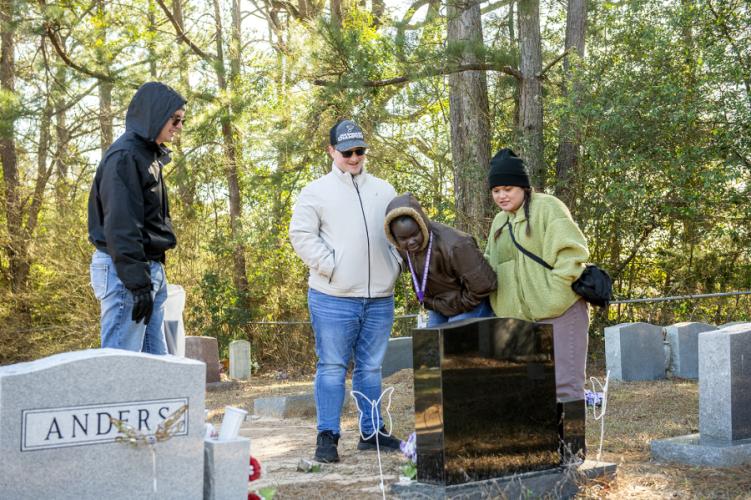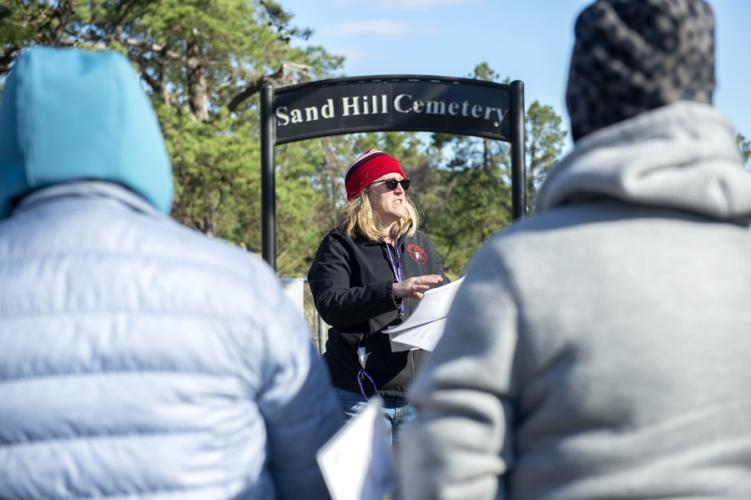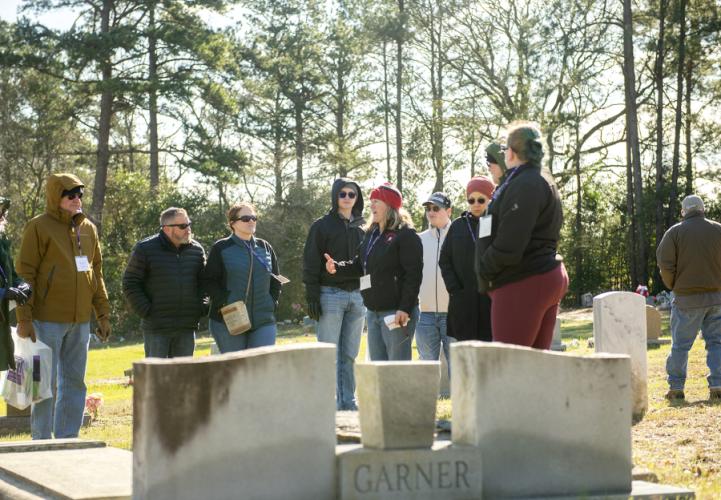NACOGDOCHES, Texas — Stephen F. Austin State University’s Department of History, in coordination with the Association for Gravestone Studies, recently hosted a three-day study and research tour of 18 East Texas cemeteries.
Dr. Perky Beisel, professor in the Department of History and vice president of the AGS, and Dr. George Avery, SFA staff archeologist and cultural heritage coordinator, led a group of 28 participants through historical cemeteries all over the region. These ranged from church and community to public and private cemeteries at stops near Huntsville, Jacksonville and Rusk. They also visited local cemeteries, such as the Sand Hill Cemetery near Chireno, Old North Cemeteries in northern Nacogdoches and Pierce-Chapel Cemetery in Cushing.
The purpose of the tour was to present gravestone studies that may be unfamiliar to participants. For example, according to Beisel, East Texas developed its own language of gravestone types, materials and motifs; burial and memorial practices; and cemetery historical preservation.
“Cemeteries in general and the gravestones in particular are often the most complete record of historic communities, especially when considering religious, ethnic, racial or class minorities,” Beisel said. “Researchers can discover clues to the transmission of religious and social values, trace migration and trade patterns, community identity, and the spread of popular culture.”
The cohort studied the arrangement, layout plantings, fencing, structures, signage and interpretations of the various cemeteries. They also studied gravestones, such as the materials, styles, motifs, iconography and symbolism used, as well as repairs and damage to the stones.
Participants included faculty members from various institutions as well as advocational scholars and preservationists from 12 U.S. states.
Dr. Ian Brown, retired professor of anthropology from the University of Alabama and former AGS president, traveled from Tuscaloosa, Alabama, for the tour. His research interests involved analyzing the similarities and differences of cemeteries and gravestones from places he worked while in Alabama, as well as discovering the history of East Texas through its cemeteries.
“These are the people who didn’t write about their lives, for the most part,” Brown said about the history of the gravestones and cemeteries. “What we mostly know about them, unless it’s from tax or other records, is what’s left on their graves and what they want to be remembered by.”
“The whole structure of the cemeteries is very different, so that’s saying something about life as well,” Brown continued. “How you set up, treat and respect your dead says something about your life as a people.”
Brown has been a member of AGS since 1987 and has attended the conferences since 2002. The tour of East Texas is the first to be held separately from the normal AGS meeting tours typically held in June.
The tour goes hand in hand with the purpose of the AGS, which is to further the study and preservation of gravestones. Founded in 1977, the AGS is an international organization that promotes the study of gravestones from historical and artistic perspectives, expands public awareness of the significance of historic grave markers, and encourages individuals and groups to record and preserve gravestones, according to the organization’s website.
“We hope the participants gained an appreciation for and better understanding of how national cemetery and gravestone trends were adopted and adapted here in East Texas, as well as types, materials and motifs unique or prevalent to East Texas in comparison with the rest of the nation,” Beisel said. “It also was a way to study the conservation of gravestones and cemetery management practices as they relate to our environmental, economic, social and geographical factors.”
For more information about SFA’s Department of History, visit sfasu.edu/history.

 Axe ’Em, Jacks!
Axe ’Em, Jacks!


